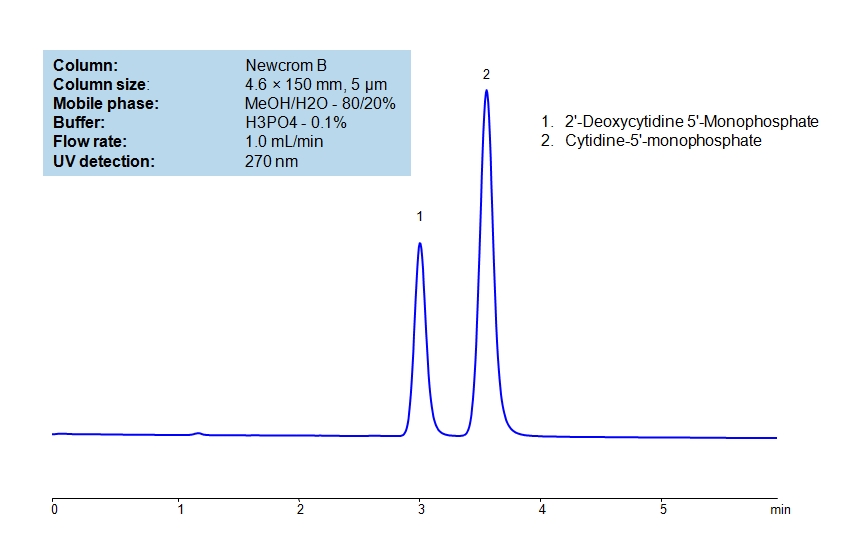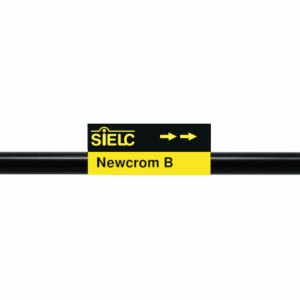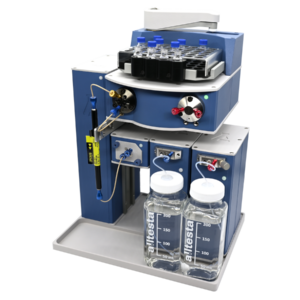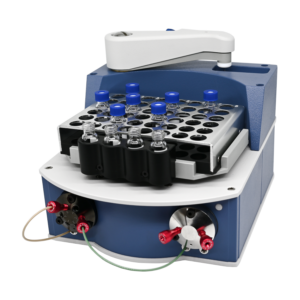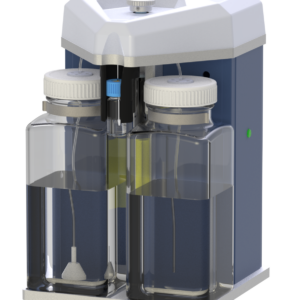HPLC Method for 2'-Deoxycytidine 5'-Monophosphate, Cytidine Monophosphate on Newcrom B by SIELC Technologies
High Performance Liquid Chromatography (HPLC) Method for Analysis of 2'-Deoxycytidine 5'-Monophosphate, Cytidine Monophosphate .
Cytidine-5′-monophosphate is a nucleoside monophosphate with C9H14N3O8P chemical formula. It is a fundamental building block for RNA and DNA as well as an intermediate in phospholipid synthesis.
2′-Deoxycytidine 5′-Monophosphate is a deoxyribonucleotide with C9H14N3O7P chemical formula. It is crucial when it comes to DNA synthesis. dCMP is often used in genetic research, biotechnology, and development of pharmaceuticals with a focus on antiviral and anticancer drugs.
2'-Deoxycytidine 5'-Monophosphate, Cytidine Monophosphate can be retained and analyzed using the Newcrom B stationary phase column. The analysis utilizes an isocratic method with a simple mobile phase consisting of water and acetonitrile (MeCN) with a phosphoric acid buffer. Detection is performed using UV.
| Column | Newcrom B, 4.6 x 150 mm, 5 µm, 100 A, dual ended |
| Mobile Phase | MeOH/H2O – 80/20% |
| Buffer | H3PO4 – 0.1% |
| Flow Rate | 1.0 ml/min |
| Detection | UV 270nm |
| Class of Compounds | Acid, Hydrophilic, Ionizable |
| Analyzing Compounds | 2'-Deoxycytidine 5'-Monophosphate, Cytidine Monophosphate |
Application Column
Newcrom B
Column Diameter: 4.6 mm
Column Length: 150 mm
Particle Size: 5 µm
Pore Size: 100 A
Column options: dual ended
Cytidine Monophosphate

